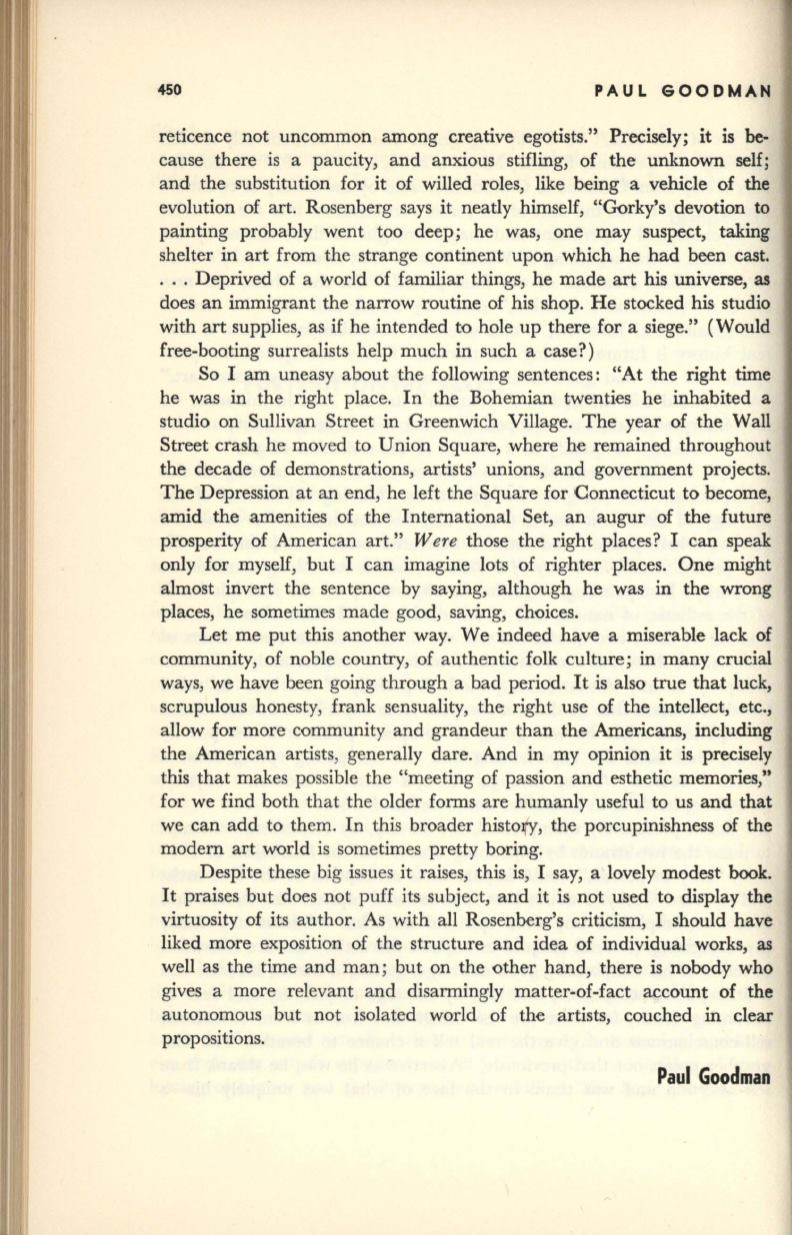
450
PAUL GOODMAN
reticence not uncommon among creative egotists." Precisely; it is
be–
cause there is a paucity, and anxious stifling, of the unknown self;
and the substitution for it of willed roles, like being a vehicle of the
evolution of art. Rosenberg says it neatly himself, "Gorky's devotion to
painting probably went too deep; he was, one may suspect, taking
shelter in art from the strange continent upon which he had been cast.
. . . Deprived of a world of familiar things, he made
art
his universe, as
does an immigrant the narrow routine of his shop. He stocked his studio
with art supplies, as if he intended to hole up there for a siege." (Would
free-booting surrealists help much in such a case?)
So I am uneasy about the following sentences: "At the right time
he was in the right place. In the Bohemian twenties he inhabited a
studio on Sullivan Street in Greenwich Village. The year of the Wall
Street crash he moved to Union Square, where he remained throughout
the decade of demonstrations, artists' unions, and government projects.
The Depression at an end, he left the Square for Connecticut to become,
amid the amenities of the International Set, an augur of the future
prosperity of American art."
Were
those the right places? I can speak
only for myself, but I can imagine lots of righter places. One might
almost invert the sentence by saying, although he was in the wrong
places, he sometimes made good, saving, choices.
Let me put this another way. We indeed have a miserable lack of
community, of noble country, of authentic folk culture; in many crucial
ways, we have been going through a bad period. It is also true that luck,
scrupulous honesty, frank sensuality, the right use of the intellect, etc.,
allow for more community and grandeur than the Americans, including
the American artists, generally dare. And in my opinion it is precisely
this that makes possible the "meeting of passion and esthetic memories,"
for we find both that the older forms are humanly useful to us and that
we can add to them. In this broader histOlfy, the porcupinishness of the
modern art world is sometimes pretty boring.
Despite these big issues it raises, this is, I say, a lovely modest book.
It praises but does not puff its subject, and it is not used to display the
virtuosity of its author. As with all Rosenberg's criticism, I should have
liked more exposition of the structure and idea of individual works, as
well as the time and man; but on the other hand, there is nobody who
gives a more relevant and disarmingly matter-of-fact account of the
autonomous but not isolated world of the artists, couched
in
clear
propositions.
Paul Goodman


